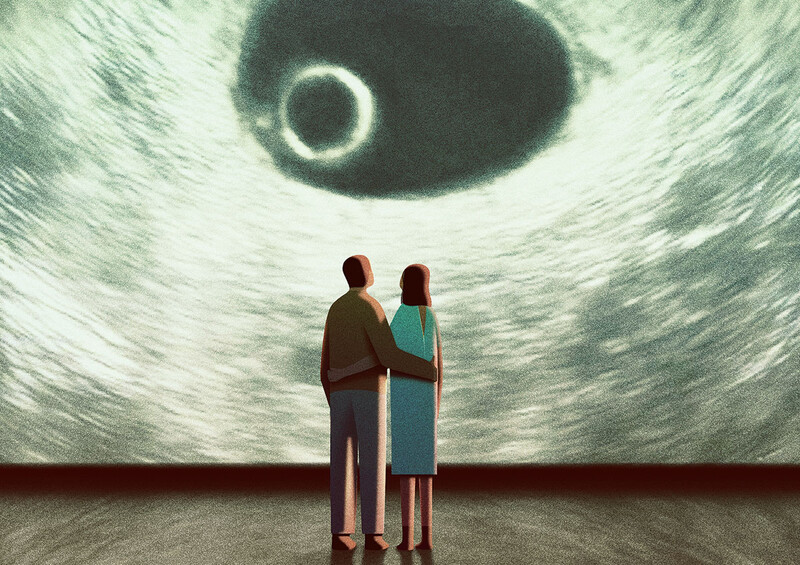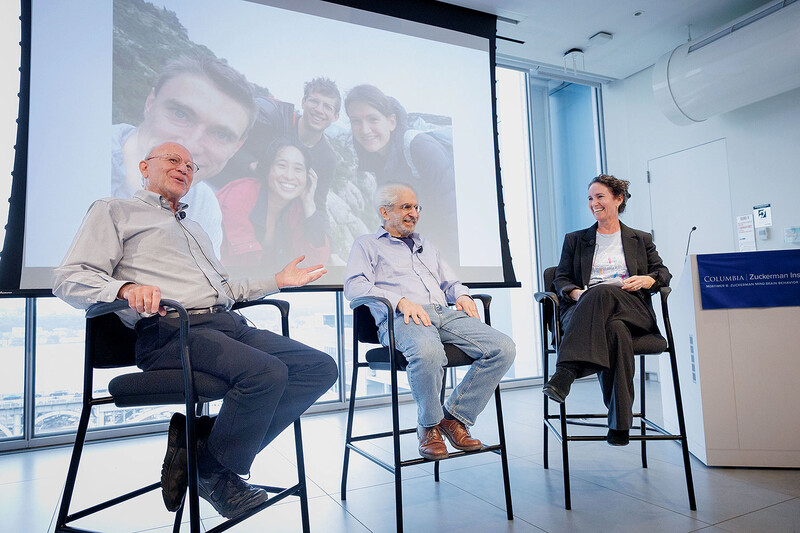On the screen above the speakers’ heads, little Laura peeks out of the passenger door of her father’s lemon-colored hatchback. The rear of the car is crammed with construction detritus, and her face is bright and beaming, full of mischief.
“Keep the slide show behind me in mind when I’m reading the depressing bits,” says George Estreich, Laura’s father and the author of The Shape of the Eye, a memoir that traces his family’s experience when their youngest daughter was diagnosed with Down syndrome shortly after her birth. Estreich is speaking at a Heyman Center for the Humanities event titled “Parenting, Narrative, and Our Genetic Futures.” He is joined this spring-semester evening on the stage in Buell Hall by Alison Piepmeier, director of women’s and gender studies at the College of Charleston, and Rachel Adams, author of Raising Henry and professor of English and comparative literature at Columbia. All three are parents of children with Down syndrome.
“We were undone by the news for a long time,” Estreich says, reading aloud from his memoir. But he came to learn that the syndrome is variable. Although Laura had heart surgery when she was three months old and experienced other medical difficulties, the photos in the slide show capture Laura in a red dance-recital tutu and leading a llama on a leash for her 4-H work, laughing after the animal tried to kiss her — scenes that Estreich could not have imagined when the initial diagnosis came through. In his book, Estreich was primarily concerned with representing Laura fairly without downplaying her struggles. “I wanted to write in a way that doesn’t weaponize her,” Estreich says, referring to the debate over whether mothers should give birth to babies with genetic disorders.
Piepmeier, who shares pictures of her daughter Maybelle reading cozily in bed, has been working on a book that gets to the marrow of what is at stake with these new tests. For her forthcoming A Choice with No Story: What Prenatal Testing and Down Syndrome Reveal about Our Reproductive Decision-Making, Piepmeier initially interviewed women who chose to keep their babies after a prenatal test confirmed the likelihood of Down syndrome, and then interviewed women who chose to abort. “My research suggests these are interviews that have rarely been done, if they have been done at all,” Piepmeier says.
What surprised Piepmeier was the overwhelming number of women who chose to terminate their pregnancies out of the desire to be a good mother. She identified startling similarities between the two groups. “One woman who terminated saw it as selfless love; one who kept her child worried she was selfish,” Piepmeier says. Both decisions were repeatedly described as “torturous” by the interviewees.
As diagnostic tools like the $1,000 genome become a reality, there will be more personal stories to tell about these decisions. “Memoir is at once so popular and widely read and yet so devalued when compared to science,” says Adams. “Narrative is powerful because it helps us make sense of ethical questions.”
“That’s also the paradox,” Piepmeier says. “These stories threaten because they don’t offer answers.”
But unlike science, story strives for truth as opposed to fact. “For most people, Down syndrome is a medical condition,” says Estreich. “But for me, it’s Laura’s way of being human.”


